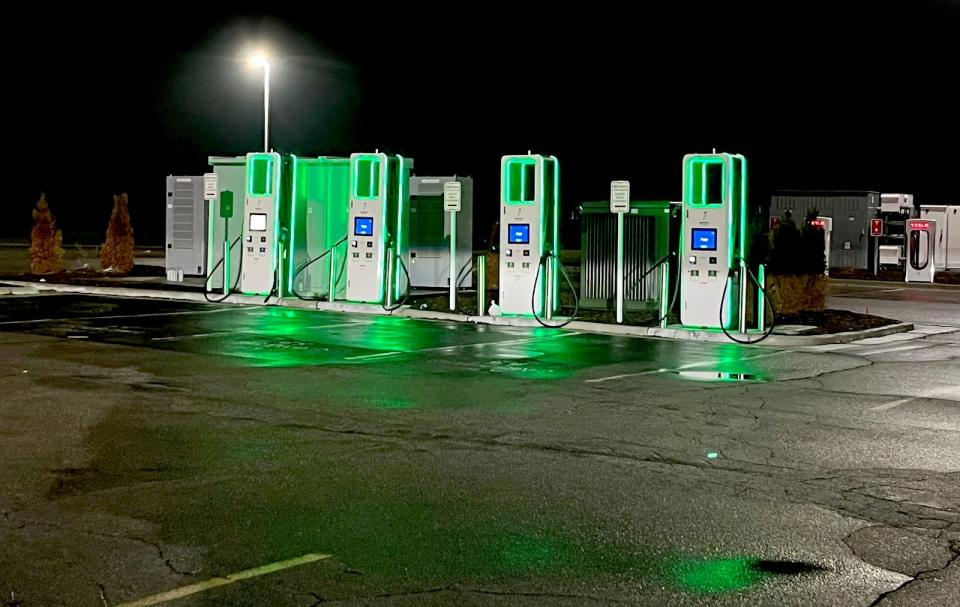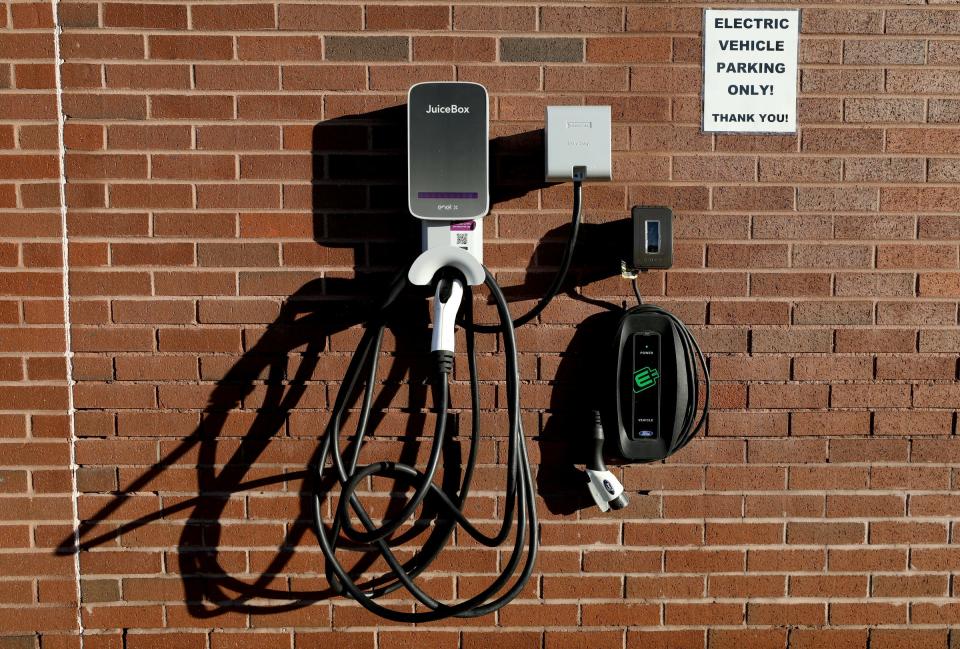Can pacemaker users charge EVs safely? Questions linger.
The leading manufacturer of heart pacemakers recommends users of its devices stay at least 12 inches away from electric vehicle charging stations, advice that could keep millions of people around the world from using EVs and slow the increasingly popular technology’s expansion.

There’s no evidence of harmful interactions between charging stations and pacemakers or other implantable medical devices.
The manufacturer — Medtronic — recommends maintaining the distance “as a precaution. No evidence of interference has been observed,” a company spokesperson said. Medtronic also pointed out that there are a lot of different charging companies and it doesn’t know what standards they all observe.
The issue for EV owners is that you can’t charge an electric vehicle without handling a cable carrying electricity to the vehicle. EV charging stations don’t come with attendants.
Medtronic’s caution is understandable. It’s responsible for medical devices. Testing EV chargers isn’t their responsibility, but as electric vehicle ownership and popularity surge, you’d think somebody would have done the research.
Electric vehicles, as opposed to charging stations, were rigorously tested years ago for electromagnetic interference (EMI) with medical devices, including pacemakers. There were no issues.
How did nobody ask this before?
What’s surprising is that none of the automakers or charging companies investing billions of dollars in EVs and charging networks commissioned research into the same question about the charging stations electric vehicles require.
At issue: Can electromagnetic fields from high-voltage DC fast chargers — power up to 350 kW (800 volts) is increasingly common — interfere with pacemakers or other medical devices, causing them to malfunction?
There are three basic types of EV chargers: 120 volt (called Level 1), 240 volt (Level 2) and more powerful DC fast chargers. There doesn’t seem to be any doubt 120v and 240v chargers are safe. People come in contact with them from household and commercial devices every day. Level 2 240v chargers are also common in municipal and workplace parking structures.

Pacemakers monitor the heartbeat and deliver a small electric current to correct irregularities. They’re tiny, internal defibrillators, officially called cardiovascular implantable electronic devices, or CIEDs.
After weeks of digging, I found experts in medicine and engineering who say DC EV chargers pose no risk, but automakers and charging companies still end most conversations with “follow the advice of your medical device manufacturer.” Even usually reliable publications give dire advice like, “EVs are safe for those with cardiovascular electronic devices. ... However, they should let another person plug and unplug the vehicle and stay away during the entire charging process.”
More: EV drivers aren't happy with public chargers, survey says. Neither am I.
So far, so good
Which one is it?
There have been no reports of pacemaker users suffering any ill effects from charging, but just a year ago, the FDA recommended people keep their cell phones at least 6 inches from their pacemakers. Basically, keep your phone out of your chest pocket.
DC fast chargers operate at far higher power levels than mobile phones. Is greater caution warranted? Automakers have tested vehicles to make sure powerful electric currents in utility cables, for example, don't interfere with vehicle electronics for decades, but the question of high voltage from chargers messing with people is new.
About 200,000 pacemakers are implanted in Americans annually, and more than a million worldwide, according to the National Library of Medicine at the National Institutes of Health, which also recently reported “various sources list the number of individuals in the United States with an implantable pacemaker anywhere between 500,000 and 3 million.” The number of people with implantable electronic devices globally is likely tens of millions.
That’s a lot of potential EV owners.
EV drivers have been using high-powered DC fast chargers at least since Tesla opened the first of its "supercharger" stations in 2012. Tesla now has a nationwide network of more than 10,000 superchargers, and many more in Europe and China. Its drivers use them every day. Charging companies like Electrify America and EVgo are building similar nationwide networks open to all brands and used 24 hours a day.

An answer, at last
You’d hope somebody would’ve noticed if people were keeling over at EV chargers, but who knows?
My experience is that high-voltage current doesn’t start flowing from DC kiosks the moment a cable is connected to the EV. There’s a pause before charging begins. By then, I’ve walked away or am seated in the car, well over a foot from the charger. After charging, electricity stops flowing the moment I unplug. Throughout the process, the cable and connector at the end of my arm are seldom if ever within 12 inches of where my heart would be, if journalists had them. (Ha.)
All that made me suspect DC fast chargers are safe, but where was the proof?
I eventually found credible sources who say pacemaker users can charge EVs without concern.
Here is what Dr. Fred Kusumoto, electrophysiologist and director of the Heart Rhythm Services Mayo Clinic in Jacksonville, Florida, says:
“I posed your question to K.L. Venkatachalam, a retired Mayo Clinic electrophysiologist who also has a background in electrical engineering. He noted that the 40-80 amps of charge current is delivered through closely coupled live and return wires and would result in a negligible magnetic field that would in addition decrease rapidly by distance. Although a recommended distance of 12 inches is often provided for many products, this is also arbitrary and likely not necessary.”
And here is what General Motors, which has sold hundreds of thousands of EVs and has engineers working on them all over the world, says:
“Specifically regarding medically implantable devices (such as pacemakers and insulin pumps), testing and compliance with these standards is performed to ensure that there will be no interaction with these devices when customers are operating or charging their electric vehicles.”
That should put pacemaker users at ease with DC fast charging, but the dearth of dedicated research into a multibillion-dollar question remains surprising. Academia abhors a grant that hasn’t been applied for, though. I suspect we'll have detailed answers soon.
Contact Mark Phelan: 313-222-6731 or mmphelan@freepress.com. Follow him on Twitter @mark_phelan. Read more on autos and sign up for our autos newsletter. Become a subscriber.
This article originally appeared on Detroit Free Press: Can pacemaker users charge EVs safely? Manufacturer issues warning.

 Yahoo Autos
Yahoo Autos 